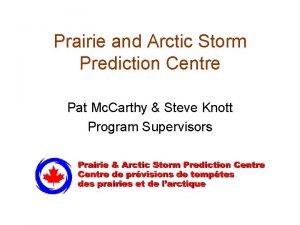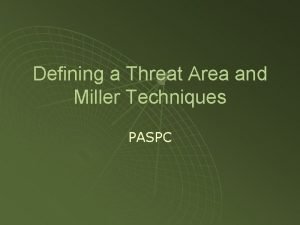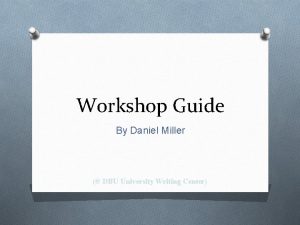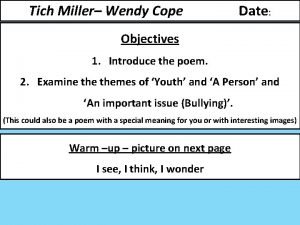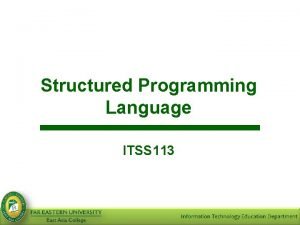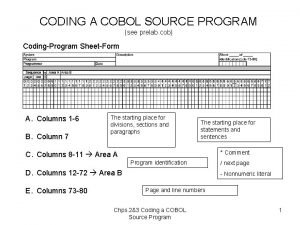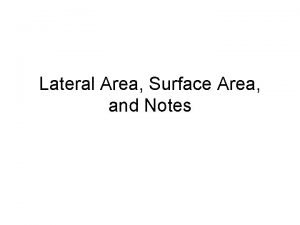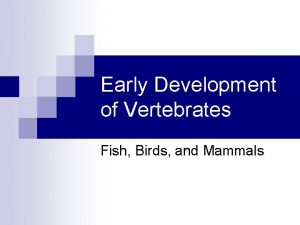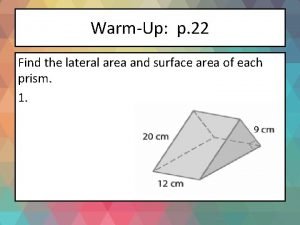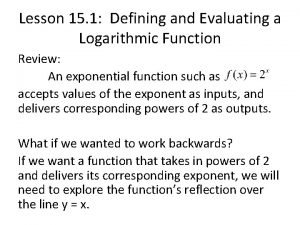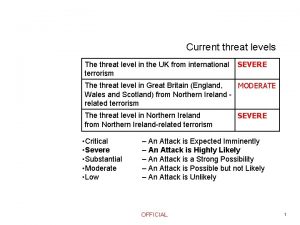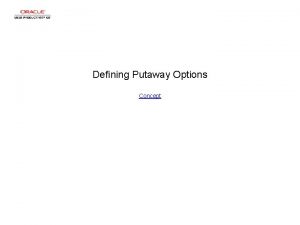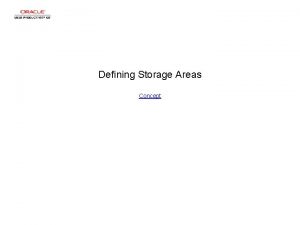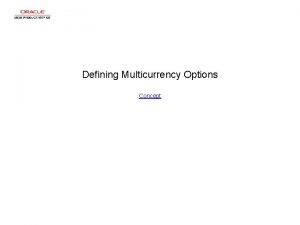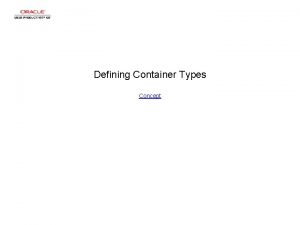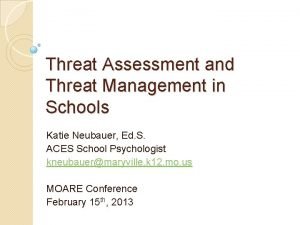Defining a Threat Area and Miller Techniques PASPC





















- Slides: 21

Defining a Threat Area and Miller Techniques PASPC

Seeing Through the “MIST” u u Four Requirements for Sustained Deep Convection Moisture: latent energy fuels thunderstorms (depth of BL moisture important) Instability: to realize latent energy (via CAPE, instability parameters) Wind Shear: cold pool interactions, deep shear tilts updraft, generates rotation Trigger: mechanism producing vertical motion to release the latent energy (i. e. , lift parcel to LFC, e. g. , PVA, front, dryline, SFC trof…) 2

Miller Techniques u Method to help diagnose areas of: • • u u Moisture Instability Shear Trigger (vertical motion or lift) Construct a threat area where the ingredients come together. 3 D look through the atmosphere. • Similar techniques for non convective assessment.

250 mb u u u 250 mb jet Enhance vertical motion Straight Jet • RE/LE = LIFT u Cyclonically curved • LE = LIFT u Anti-cyclonically curved • RE = LIFT u u Difluent areas favoured Patterns…. Splitting Jets J 0 2 1

500 mb u u u u 500 mb jet (30 kt or more) Cold Trough Thermal Ridge axis Areas of difluence 500 mb height fall centres PVA May consider 500 mb lift J 50

700 mb u u u 700 mb Thermal ridge and thermal trough 700 mb temp 10 -12 C 700 mb moisture (T-Td <6 C (75% RH)) Dry Prod (T-Td >>6 C) Lift Lapse Rates (T 700 – T 500)

850 mb u 850 low level jet (LLJ) - Often responsible for moisture advection into the region. u 850 Thermal Ridge -the boundary between WAA and CAA; can be associated with the strongest capping lid and CAA may erode the “nose”. u 850 Convergence zone u 850 Moist Axis - -Area of lift superimposed over SFC moist axis to indicate depth of moisture. X X

Surface u u u u Frontal structure and trofs/ zones of convergence Streamlines can be useful Surface Moist tongue outlines where Td <12 C Td analysis every 2 C. Dry lines Issallobars What you chose to illustrate on Miller workup can vary with the situation

Personal Favorites u u u u 250 Jet Buoyant Energy & CIN SWEAT Lapse Rates Low Level Jet Dewpoint axis (with contours) Surface fronts/trofs (low level conv) 850 -500 thermal ridge u u u 700 mb moisture (cloud areas) Profile Plots Short Waves or PVA 500 mb Z change Areas of strong descent SRH (when applicable)

De. Limiters u Where will convection NOT occur • Subsidence greater than 4 ubs-1 • Downwind of mid level thermal axis • Areas sfc divergence or sfc ridges • T 700 >10 -12 C • Anticyclonic side of low level jet • Significant building 500 mb heights • CIN >50 -100 • CAPE<300

Threat Areas u u u Now that we have Miller in our back pockets, what now? Areas where Moisture, Instability and Trigger intersect creates zones of garden variety convection…. use sounding lifts for details such as CB tops, hail size, gust potential Pattern Recognition extremely helpful Apply general rules of delimiters Shear is generally the parameter which determines storm severity.

A Convective Forecast Decision Tree moisture NO storms unlikely YES instability NO storms unlikely YES trigger NO storms unlikely YES storms likely but what type? SFC-500 mb shear >50 kt 30 -50 kt supercells likely short-lived cells check <30 kt 700 mb shear long-lived cells possible supercell SFC-700 mb shear >20 kt new cell development down shear >30 kt long-lived multicells 12

Shear u 0 -6 km Shear • Vector Difference • Shear Magnitude u u >30 -40 knots >40 -50 knots Bulk Richardson Number: 10 -45 (supcell) SRH > 150 m 2 s 2 EHI > 1 Mean Shear (Shear magnitude/depth) • Multicell • Supercell 5 x 10 -3 s-1 7 x 10 -3 s-1

END

INSTABILITY Parameter Strong Moderate Neutral Weak Adequate Marginal Negative Lifted Index < -6 -4 to -6 0 to -3 >0 CAPE >2500 1000 - 2500 >0 to 1000 0 Vertical Motion > +4 +2 to +3 -1 to +1 < -1

SHEAR Parameter Strong Moderate Neutral Weak Adequate Marginal Negativ e 850 LLJ (kt) >35 25 -35 20 -25 <20 500 mb Jet >50 35 -50 30 -35 <30 850 -500 shear Speed (kt) Dir (deg) >35 >60 25 -35 30 -60 15 -25 20 -30 <15 <20

Limiting Factors Subtropical jet axis Upward Motion (limit on south side) Wind Shear 850 mb LLJ Upward Motion (limit to right of axis) Wind Shear 700 mb T > 10 - 12 C Capping Inversion 500 mb T -6 C (warm side) 0 to 1 km SRI 20 -25 kts (limit on low side) 0 to 2 km Helicity of 150 for super cells (low side) 0 to 6 km shear of 40 kts for super cells (low side) 500 to 600 mb SRF 15 to 20 kts (low side)

Limiting Factors LI zero line (stable side) Instability 45% 700 mb mean RH line (dry) Instability 75% 700 mb mean RH line (wet) Instability Potnl Neg Buoyancy 552 or 558 dm (cold side) Instability 579 -582 dm (warm side) Capping Inversion Surface Boundaries Upward Motion Instability Wind Shear

LIFT Parameter Strong Moderate Neutral Weak Adequate Marginal Negativ e 850 temp advection warm neutral cold Low Level Flow convergent neutral divergent 850 mb Therm/Mois t axis Thermal upstream coincident Thermal down stream

MOISTURE Parameter Strong Moderate Neutral Mean RH Weak Adequate Marginal Negativ e 50 -70% 70 -80% OR 40 -50% >80% OR <40%

Limiting Factors Directional difference between 500 and 850 mb is less than 90 deg 850 mb wind 20 kt (low side) 500 mb wind 30 kt (low side) Directional difference between 500 and 850 mb is 90 deg or more 850 mb wind 15 kt (low side) 500 mb wind 20 kt (low side)
 Dot transfer papers
Dot transfer papers Paspc
Paspc Relative adverbs
Relative adverbs Relative clauses defining and non defining
Relative clauses defining and non defining Non defining
Non defining Defining and non defining relative clauses in telugu
Defining and non defining relative clauses in telugu Relative clause definition
Relative clause definition Relative clauses where which farkı
Relative clauses where which farkı 020 miller plane
020 miller plane Daniel miller arthur miller
Daniel miller arthur miller Medical plaza miller 131 miller street
Medical plaza miller 131 miller street Poetic techniques in tich miller
Poetic techniques in tich miller Fonctions techniques
Fonctions techniques Cobol area a and area b
Cobol area a and area b Cobol area a and area b
Cobol area a and area b Curved surface area of cone
Curved surface area of cone Cobol area a and area b
Cobol area a and area b Triangular prism total surface area formula
Triangular prism total surface area formula Define lateral area
Define lateral area Cleavage in bird
Cleavage in bird Find the lateral area and surface area of each prism
Find the lateral area and surface area of each prism Defining and evaluating a logarithmic function lesson 15-1
Defining and evaluating a logarithmic function lesson 15-1
